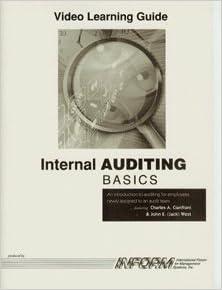Question
Consider a three-city airline network from A to C with a stop at B. There are two classes per itinerary, with the fares andexpected ODF
Consider a three-city airline network from A to C with a stop at B. There are two classes per itinerary, with the fares andexpected ODF demands shown in the following table:
| Number | Itinerary | Class | Fare | Expected Demand |
| 1 | A to B | Full fare | 300 | 30 |
| 2 |
| Discount | 230 | 60 |
| 3 | B to C | Full Fare | 280 | 20 |
| 4 |
| Discount | 160 | 80 |
| 5 | A to C | Full Fare | 500 | 30 |
| 6 |
| Discount | 340 | 40 |
The airline has 100 seats on the leg from A to B, and 120 seats on the leg from B to C.
- Suppose that the airline company wants to use the deterministic linear programming method to determine thepartitioned booking limits. Formulate this problem as a linear program and solve it using Excel.
- Suppose that the airline company wants to use virtual nesting method to determine the nested booking limits. The manager decides that each leg (A to B, and B to C) has three buckets, defined as follows:
Bucket 1: Net leg fares > 275
Bucket 2: Net leg fares between 200 and 275 Bucket 3: Net legfares < 200
Please use the sensitivity report from part a) to find the opportunity cost for each legs seat, then calculate the net legfares and index buckets.
- Given the indexed buckets for the leg from A to B in part b), use ESMR-b to find the nested booking limits forthis leg. Assume all ODFs demands follow normal distribution with standard deviation equal to 5.
Step by Step Solution
There are 3 Steps involved in it
Step: 1

Get Instant Access to Expert-Tailored Solutions
See step-by-step solutions with expert insights and AI powered tools for academic success
Step: 2

Step: 3

Ace Your Homework with AI
Get the answers you need in no time with our AI-driven, step-by-step assistance
Get Started


